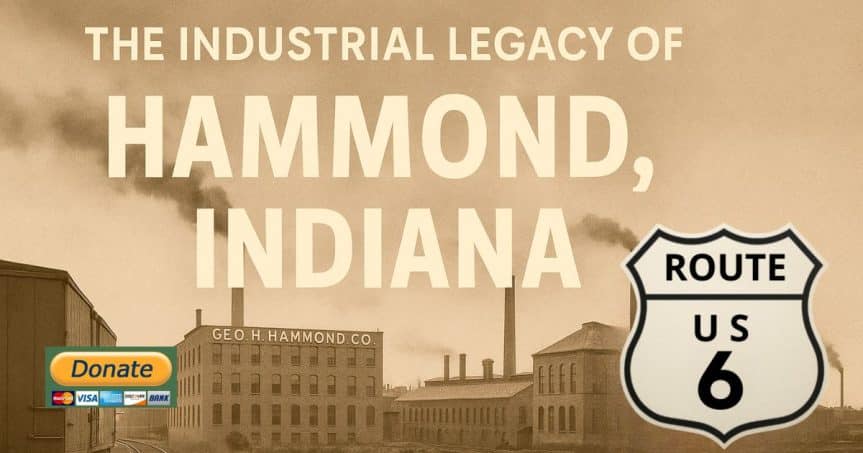Nestled along the southern shores of Lake Michigan, Hammond, Indiana, holds a unique place in America’s industrial story. Once a thriving hub of meatpacking and manufacturing, the city rose to prominence during the late 19th and early 20th centuries as part of the broader industrial expansion that shaped the Rust Belt. At the heart of this growth was the George H. Hammond Company, a pioneering enterprise that helped put Hammond on the map and influenced the evolution of food distribution in the United States.
The Rise of the Meatpacking Industry in Hammond
Founding of the George H. Hammond Company
The George H. Hammond Company was established in the late 1860s by entrepreneur George H. Hammond, who sought to revolutionize the way fresh meat was transported. Located in Hammond, Indiana, the company leveraged the city’s proximity to major rail lines and Lake Michigan shipping routes. This strategic location allowed for efficient distribution to rapidly growing urban centers like Chicago, just 20 miles to the west.
Innovations and Impact
The company became one of the first in the nation to use refrigerated railcars, an innovation that dramatically extended the reach of fresh meat to markets previously inaccessible. By the 1880s, the George H. Hammond Company had become one of the largest meatpacking operations in the Midwest, employing thousands of workers and contributing significantly to Hammond’s rapid population growth. At its peak, the facility processed millions of pounds of beef annually, setting new standards for both scale and efficiency in the industry.
Community and Workforce
The rise of the meatpacking plant brought waves of immigrants and working-class families to Hammond, seeking employment and opportunity. Neighborhoods developed around the plant, and the city’s cultural fabric became a blend of European traditions and industrial grit. While the work was demanding and often dangerous, the plant’s payroll sustained countless families and fostered a sense of shared purpose among residents.
Hammond’s Place in the Rust Belt Narrative
Industrial Expansion and Decline
Hammond’s prosperity mirrored that of the broader Rust Belt region, a term later coined to describe America’s once-dominant industrial corridor stretching from the Midwest to the Northeast. As steel, meatpacking, and manufacturing industries boomed, cities like Hammond thrived. However, by the mid-20th century, the decline of American manufacturing hit the city hard. The George H. Hammond Company, once a symbol of innovation, closed its doors in the early 1900s after being acquired by larger competitors, foreshadowing the economic challenges that would follow.
Geographic Significance
Hammond’s location at the crossroads of rail and water routes made it an industrial linchpin in the Midwest. This strategic positioning not only facilitated the growth of meatpacking but also later attracted steel mills and related industries. Yet, as global competition and automation reshaped manufacturing, Hammond—like many Rust Belt cities—faced economic contraction, population loss, and the challenge of redefining its identity.
A City in Transition
Today, Hammond is engaged in a complex process of revitalization. Efforts to repurpose historic industrial sites, invest in education, and diversify the local economy are slowly reshaping the city’s future. While the towering smokestacks and bustling rail yards of the past are less prominent, the legacy of Hammond’s industrial pioneers continues to influence its cultural identity and community pride.
Conclusion
Hammond, Indiana’s industrial journey is emblematic of the broader Rust Belt narrative—a story of innovation, growth, and resilience in the face of economic change. The George H. Hammond Company not only transformed the meatpacking industry but also shaped the city’s character and legacy. As Hammond continues to evolve, its history remains a vital touchstone, reminding residents and visitors alike of the city’s pivotal role in America’s industrial heartland.
Social Media Links
1. Facebook https://www.facebook.com/groups/11546954214/posts/10162368806104215/
2. X(Twitter) https://x.com/route6tour/status/1951636696296206601
3. Linked In Community https://www.linkedin.com/posts/u-s-route-6-tourist-association_the-industrial-legacy-of-hammond-indiana-activity-7357400070788431872-RH6z
4. YouTube Community https://www.youtube.com/post/Ugkx_zZSko3oAiaSyoXnpvm_OWJYuiNuvqur
5. Reddit https://www.reddit.com/r/USRoute6/comments/1mfqqfs/hammond_indiana_how_a_meatpacking_pioneer_shaped/
6. Pinterest Pin https://www.pinterest.com/pin/333336809939138842 and https://www.pinterest.com/pin/333336809939138872
7. Instagram https://www.instagram.com/p/DM2tVU4O-b-/


